
Russellville is the county seat and largest city in Pope County, Arkansas, United States, with a 2022 estimated population of 29,133. It is home to Arkansas Tech University. Arkansas Nuclear One, Arkansas' only nuclear power plant is nearby. Russellville borders Lake Dardanelle and the Arkansas River.

75 Murray Street, also known as the Hopkins Store, is a historic building between West Broadway and Greenwich Street in the TriBeCa neighborhood of Manhattan, New York City. It was built in 1857-58 and features a cast-iron facade in the Venetian Renaissance style from the foundry of James Bogardus, one of the earliest of the few remaining facades created by the self-described inventor of cast-iron architecture.

The McDonald's Sign, also known as McDonald's Store #433 Sign, in Pine Bluff, Arkansas, United States, is one of only a few surviving examples of a single-arch McDonald's sign. The sign was erected in 1962 and remained at its original location until 2007. That year, McDonald's Store #433 moved and the sign was renovated and moved to the new location. The McDonald's sign was added to the U.S. National Register of Historic Places in 2006.
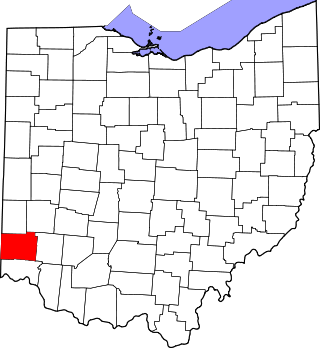
This is a list of the National Register of Historic Places listings in Butler County, Ohio.

The Big Four Building is a historic 19th-century building in Downtown Sacramento, California. It is now located within Old Sacramento State Historic Park and the Old Sacramento National Historic District.

George Richard Mann was an American architect, trained at MIT, whose designs included the Arkansas State Capitol. He was the leading architect in Arkansas from 1900 until 1930, and his designs were among the finalists in competitions for the capitols of several other states.

The B.B. Kirkland Seed and Distributing Company is a three-story historic warehouse building at 912 Lady Street in Columbia, South Carolina. It was listed on the National Register of Historic Places in 1979.

The Cathedral of Saint Andrew in Little Rock, Arkansas, United States, is a historic church and the oldest place of continuing worship in the city. It is the seat of the Diocese of Little Rock. The property is located at the corner of South Louisiana Street and West 7th Street in downtown Little Rock.
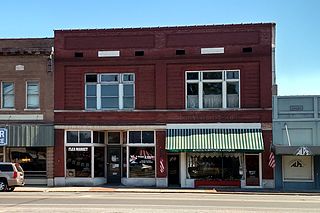
The Joe P. Eagle and D. R. Boone Building is a historic commercial building at 105-107 West Front Street in downtown Lonoke, Arkansas. It is a two-story red brick building, with a sloping flat roof obscured by parapet, and a brick foundation. It is divided into two sections, articulated by brick pilasters. The left half has an original storefront on the first floor, with plate glass display windows flanking a recessed entrance, while the right half has a more modern (1960s) appearance, with a central display window, with the store entrance on the right and a building entrance to the upper floor on the left. The second-floor on both halves has tripled sash windows, the center one larger, all topped by transom windows. The building was designed by architect Charles L. Thompson and built in 1905.
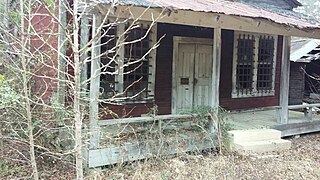
The Holt–Poindexter Store Building is a historic retail building in rural Ouachita County, Arkansas. It is located on County Road 101, near its southern junction with County Road 111, about four miles (6.4 km) north of Stephens, in the unincorporated community of Ogemaw. The store, a vernacular single-story wood-frame structure with a gable roof and full-width front porch, was built in 1904 by Curtis Smith, a local carpenter, for H. B. Holt, and is believed to be the oldest general store in southern Arkansas. A small addition was added to the north side in the 1920s to house post office facilities. This was removed in 1948, at which time a rear addition was added to provide space for an office and feed storage. The business was taken over by Holt's son-in-law, Chester Poindexter, and then his son, Kenneth.
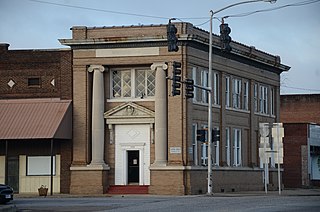
The Prescott Commercial Historic District encompasses the historic commercial core of Prescott, Arkansas, the county seat of Nevada County. Prescott was laid out in 1873, after the railroad was built through the area that is now Nevada County, and the railroad has played a significant role in the city's development. The railroad today bisects the commercial core of the city, which extends for several city blocks away from the railroad. The historic district includes all of the major civic buildings of the city, including the courthouse, post office, and the old Prescott City Jail.

The Acme Farm Supply Building is a listed building in Nashville, Davidson County, Tennessee, US. Originally a grocery store, it has been a restaurant and music venue since 2014.

The Kress Building is a historic commercial building at 210 West Main Street in Blytheville, Arkansas. It is a two-story concrete and steel structure, faced in brick and terra cotta. The building is the home of the Delta Gateway Museum, which interprets the history of the city of Blytheville and the surrounding area.

The Pea Ridge Commercial Historic District encompasses the historic commercial center of Pea Ridge, Arkansas. It includes twelve buildings on Pickens Street between Greene and Davis Streets, and another seven on Curtis Street between Pike and Macintosh Streets. Of these nineteen commercial and civic buildings, thirteen are historically significant. Most of these are typical commercial buildings built between 1910 and 1930, although several date to the 1950s. Some businesses, such as Webb's Feed Store, have been in business since the early period of development, in their original premises. The town grew as an agricultural center serving first local apple growers, and then tomato growers after blight destroyed many apple orchards.

The Springdale Poultry Industry Historic District encompasses a small complex of commercial industrial buildings associated with the poultry industry in Springdale, Arkansas. Its three buildings included the original headquarters building of Tyson Foods, one of the world's largest producers of chicken meat. That building, at 319 East Emma Avenue, was built between 1914 and 1924 to house a produce store, and was extensively altered in 1947 to house the Tyson offices. Immediately adjacent at 317 East Emma is a chicken hatchery, built in 1924 by the Springdale Electric Hatchery Company and renamed the Jeff Brown Hatchery in 1949. The Tyson Feed Mill building stands behind these at 316 East Meadow. Jeff Brown was the first president of the Arkansas Poultry Improvement Association.

The Meek Building, also known as the Hogg Building, is a historic commercial building at Main and Oak Streets in Leslie, Arkansas. It is a two-story brick building, with a flat roof obscured by a parapet. Its main entrance is in an angled section at the street corner, with a second store entrance facing Oak Street. Built about 1907, it is one of the oldest commercial buildings in the city, and has long been a local landmark, first housing the grocery of Roy Meek and then the meat shop of G. W. Hogg.
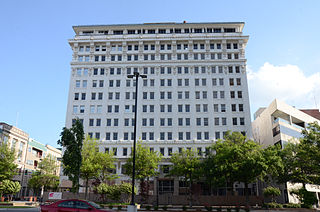
The Capitol–Main Historic District encompasses a well-preserved area of early 19th-century commercial architecture in downtown Little Rock, Arkansas. The district includes 2-1/2 blocks of Capitol Street, extending east from Center Street, one block of Main Street south of Capitol, and one block of 6th Street west of Main. The buildings in this area were mostly built before World War II, and are of a more modest scale than modern sections of the downtown. Notable buildings include the LaFayette Hotel and the Pfeifer Brothers Department Store.

The Giroux Furniture Company Building is a historic commercial building at 10-18 Catherine Street in the city of St. Albans, Vermont. Built in two parts, it is a reminder of the city's railroad-related history, and served for many years as an enduring commercial presence. It was listed on the National Register of Historic Places in 2006.
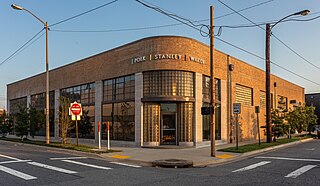
The Winchester Auto Store is a historic commercial building located at 323 West 8th Street in Little Rock, Arkansas. It has also been known as the Winchester Building. It is a single-story masonry structure, with a rounded corner at the street corner, and a flat roof. Its street-facing facades have metal casement windows, and the main entrance, set in the curved corner, is framed by windows made of glass blocks. It was built in 1947 by Dennis and Maude Winchester to house their retail auto parts store. The Winchester's family business began about 1930, and included stores in Little Rock and Pine Bluff. This building remained in use as an auto parts store until 1978, and has largely been vacant since then. It was sold by the Winchester family in 2016.





















